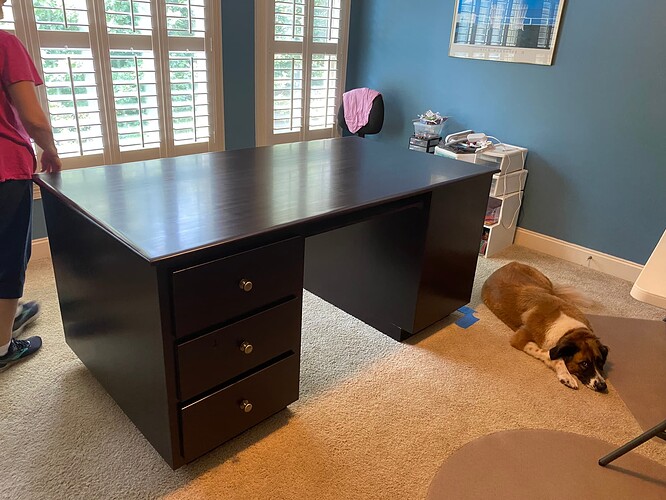I am, in any case, in no position to criticise the wood for going grey with age.
I saw the word “maple” and thought uh-oh. I built a craft table for my wife out of maple. She wanted a dark finish to match existing furniture where the table would be located. We applied stain numerous times. After each time we thought, “this looks awful” and we’d sand and apply another coat. After searching the internet and researching maple and stains, I started to realize that I didnt’ know enough about the wood before I started the project. But, in the end. it looked great. here’s a pic.
Do you remember what you ended up using?
For stain? or sanding? Sorry. Not clear what you are asking.
To save you some time, I’ll add that my wife had finished a previous antique with a stain she bought from Rockler. Since we were trying to match the stain of that piece, we went to Rockler as well. As far as sanding, oh my gosh. We applied stain. It looked really blotchy. sand it down til almost all stain was removed and go again. Ultimately we would finish with at least 220 and I think we may have used 400 grit. Maple can tend to look blotchy and our issue was more in the application technique I think. it was such a large piece (the table top), I think spray on would have been better but I do not have that capability in my shop.
One of the old timer offerings as t use india ink. This is super black , nano-pigmented and allows the grain to show somewhat, but the results are stark black. Finish with clear lacquer and use rotten stone (or 2000 grit paste such as Maquires polishing compound , autorsupply) with water between coats of lacquer for a mirror like result.
Here’s a good article on the subject, with dye recommendations:
The key for him was to get powdered dye and mix in a very high concentration. Then, be careful with water base and lacquer base for topcoats.
The balance here is that you want an uneven adsorption of the dye - otherwise you might as well use a thin paint. Real ebony has streaks of brown and even tan in it. And, you probably want to avoid any streaks created by uneven application of stain, as that always look artificial.
The problem with using woods like poplar is that they’re not dense enough to really mimic ebony, which has a very tight grain and polishes well with just a light oil finish. That said, the less dense woods will adsorb more stain and so can get darker. Another thought is to try a darker wood to being with. Walnut is an obvious choice, but that’s not as dense as ebony, however, getting more exotic (eg Padauk or Bolivian Rosewood) gets more expensive.
Old wood workers trick is to use India ink and the top coat with 2# shellac, the lacquer if desired. Rxman
This topic was automatically closed 30 days after the last reply. New replies are no longer allowed.
